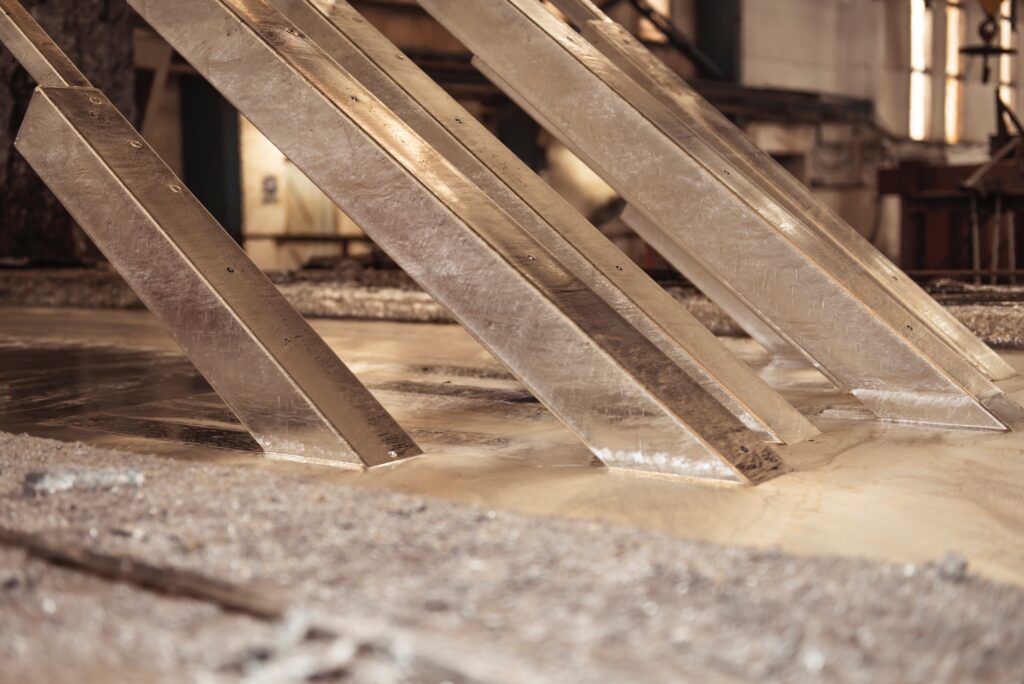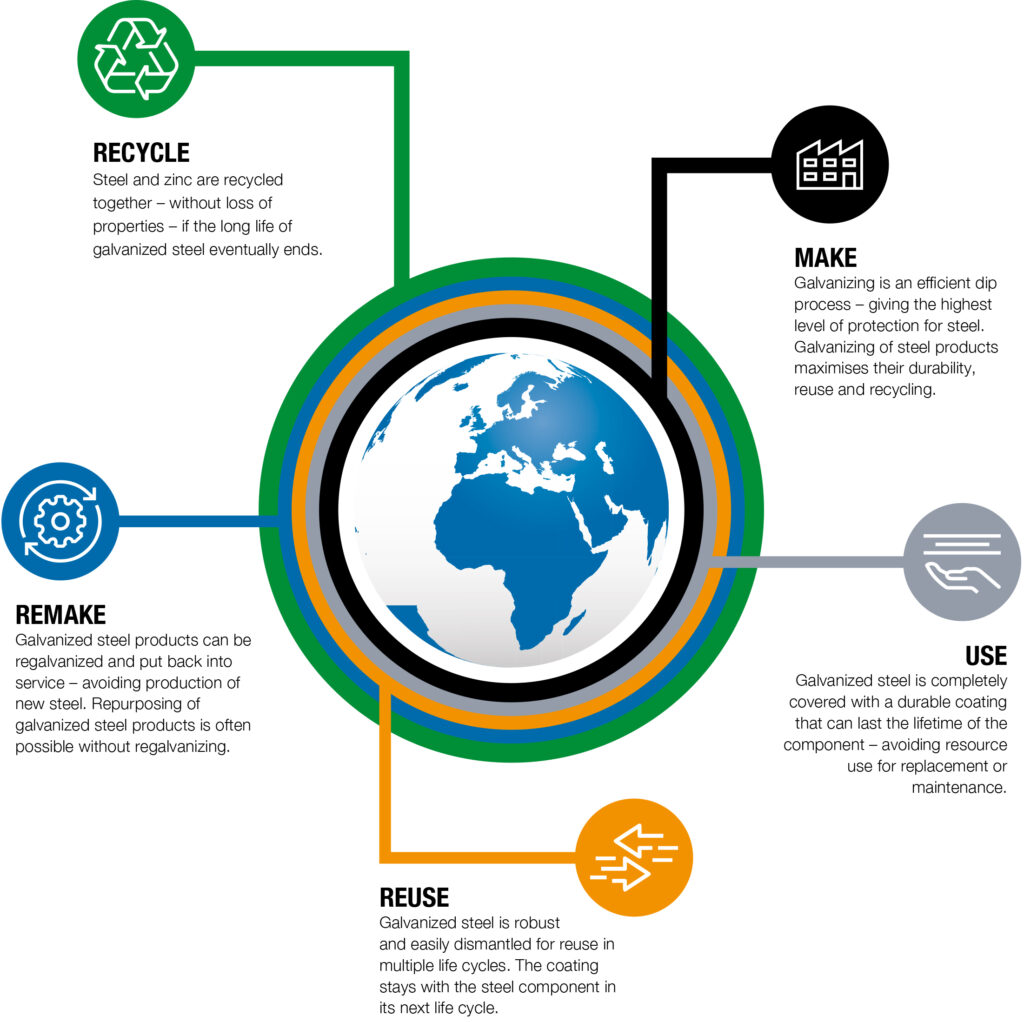
Structural steel is used in the construction industry for load-bearing structures. Its high strength-to-weight ratio supports heavy loads such as bridges, transport systems and buildings.
Because structural steel is load-bearing, the steel must be corrosion free. If decay occurs, the structural integrity of the steel weakens, which is potentially very dangerous.
Corrosion happens when steel is exposed to moisture, air, and other environmental factors. And it can appear in a matter of days if fabricated steel is without a protective coating.
The preferred protective coat against corrosion is hot dip galvanising.
How and why does galvanising protect structural steel?
During the hot dip galvanising process, steel gets dipped into a bath of molten zinc. When the steel lifts from the bath, it is coated with a layer of zinc that has metallurgically bonded to the steel. This provides a long-lasting and durable barrier against corrosion.
The zinc coat also protects the steel against scratches and damage that could happen during storage and transportation.
Longevity and durability are also good reasons why hot dip galvanising protects structural steel. Hot dip galvanised steel remains strong for 35 – 170 years (depending on the environment), withstanding harsh weather conditions. Imagine how important this is for a bridge that may have cost millions and taken years to build.
Hot dip galvanising also ensures the structural steel does not need regular maintenance, which could be the case with other coating systems.
The environmental benefits are the final factor when choosing a coating for structural steel. As a material, galvanised steel is sustainable and environmentally friendly. It also plays a role in the circular economy, readily facilitating the principles of make, use, remake, reuse and recycle.

The galvanising process itself is environmentally friendly too. At Widnes Galvanising, we take a proactive approach to controlling emissions and ensuring the highest environmental protection for every project or function of our operations.
In conclusion, the hot dip galvanising process is essential for protecting structural steel from corrosion and extending its lifespan. Therefore, it’s an intelligent – and necessary – choice for structural steel protection.
________________________
Get in touch if you’d like some advice about preparing structural steel for galvanisation, or if you need to book some projects into our plants.